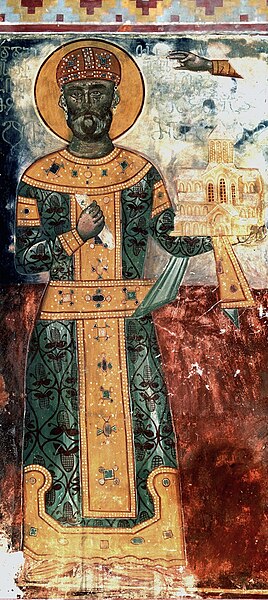The Shulaveri–Shomu culture, also known as the Shulaveri-Shomutepe-Aratashen culture, is an archaeological culture that existed on the territory of present-day Georgia, Azerbaijan, and Armenia, as well as parts of northern Iran during the Late Neolithic/Eneolithic. It lasted from around the end of the seventh millennium BC to the beginning of the fifth millennium BC.
Neolithic pottery from Ilanlitepe. Nizami Ganjavi Ganja State History-Ethnography Museum
Bone spoons, polishing implements, and boards from Kultepe I, Babadervish, and Shomutepe sites
A sickle made from bone found at Shomutepe
6th millennium BC wine jar, discovered in Shulaveri, Georgia
Georgia is a transcontinental country in Eastern Europe and West Asia. It is part of the Caucasus region, bounded by the Black Sea to the west, Russia to the north and northeast, Turkey to the southwest, Armenia to the south, and Azerbaijan to the southeast. Georgia covers an area of 69,700 square kilometres (26,900 sq mi). It has a population of 3.7 million, of which over a third live in the capital and largest city, Tbilisi. Georgians, who are indigenous to the region, constitute a majority and a titular nation in Georgia.
King Mirian III converted the nation to Christianity in the 4th century.
Northwestern Georgia is home to the medieval defensive Svan towers of Ushguli and Mestia.
Bedia Chalice, a medieval Georgian goldsmithery dated c. 999 AD.
David the Builder, the original architect of the Golden Age. Fresco from Gelati monastery.








